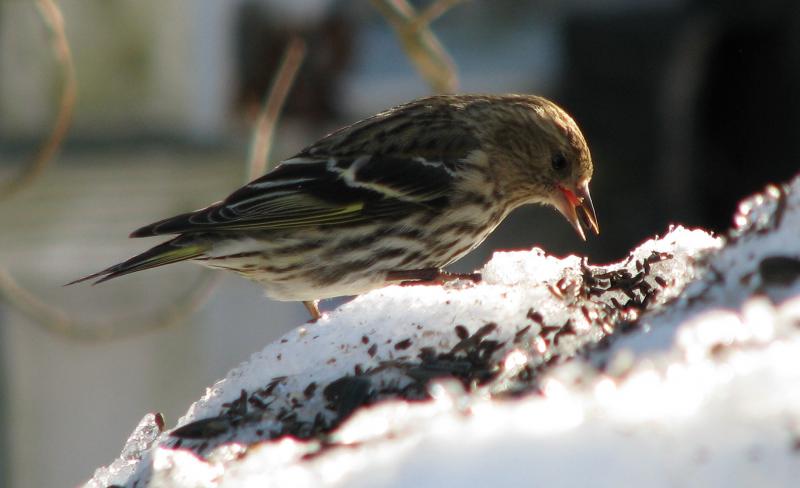Despite the lingering snow and cold this year, migrant birds are returning. American woodcock have come back and started their mating dances. Yellow-bellied sapsuckers are back, too, and tending their rectangular sap “wells” all along the coast. The list of returnees goes on and on: wood ducks, killdeer, chipping sparrows, red-winged blackbirds, common grackles, palm warblers, eastern meadowlarks, and more!
In all the excitement of ticking off the arrival dates of birds that were gone from us since last fall, the last sighting of those hardy, reliable souls that spent the winter with us is often forgotten. Our own feeders are still graced with a small flock of pine siskins whose shrill rising “scree” call is a sound we do not typically hear in the neighborhood except in winter (although pine siskins do breed sparingly in parts of Maine).
They will disappear at some point over the next days or weeks. Will the last day they are here be one that finds us busy with the distractions of life so that their final appearance of the year in our yard will go unnoticed?
Some years we have had common redpolls at the feeders well into April, and some people are still reporting them at their feeders this year. Redpolls have a long journey yet ahead of them, to their subarctic and Arctic nesting grounds. On a recent trip to southern Maine, we heard the sweet songs of an American tree sparrow floating out from a brushy ravine — another winter visitor that will leave us in the next couple of weeks for its breeding area in northern Canada and Alaska.
Flocks of Bohemian waxwings, the larger cousin of our resident cedar waxwings, are lingering in places where there are still crabapples remaining from last fall. Soon they will be gone and headed back to the land of grizzly bears in northwestern Canada and Alaska, where the bulk of the population spends the summer.
The panoply of winter sea ducks and other water birds are leaving us, too, even though many of them have just started displaying their dazzling breeding colors rather than the drab costumes of winter. Red-necked grebes, horned grebes, and red-throated loons are all excitedly gathering and moving north.
The three scoter species — surf, black, and white-winged — the males in their elegant black costumes adorned with various degrees of gawdy orange, yellow, or white, are beginning the long journey north to places like the Northwest Territories, where the lakes and ponds may not open up until June.
Several snowy owls are still around in several locations in Maine as of early April — clearly, they will not be with us much longer before the draw of the Arctic breeding grounds will send them on their way.
As the birds of spring, arrive don’t forget to say good-bye to those faithful birds of winter — that is, if winter ever leaves us!





























.png)
.png)

